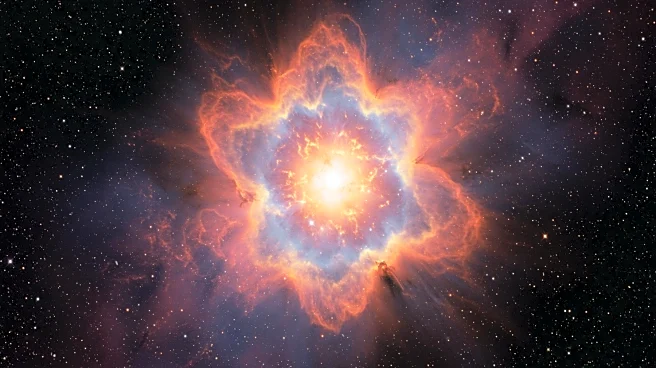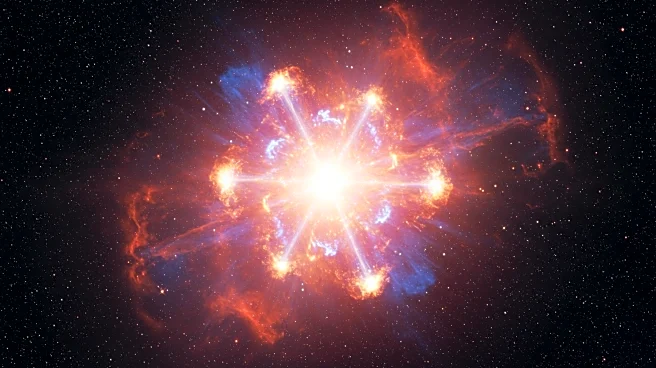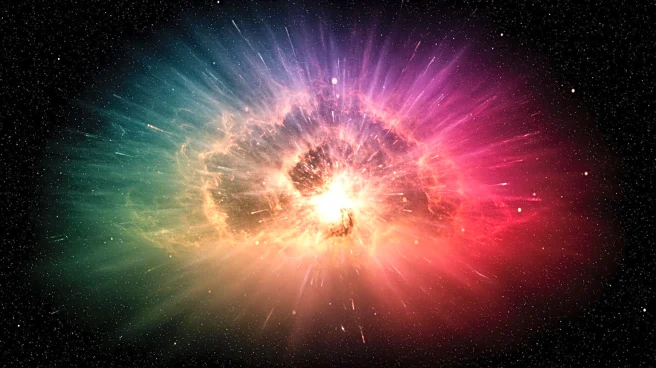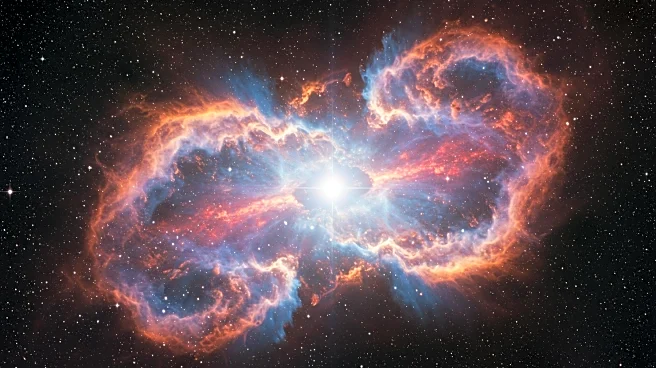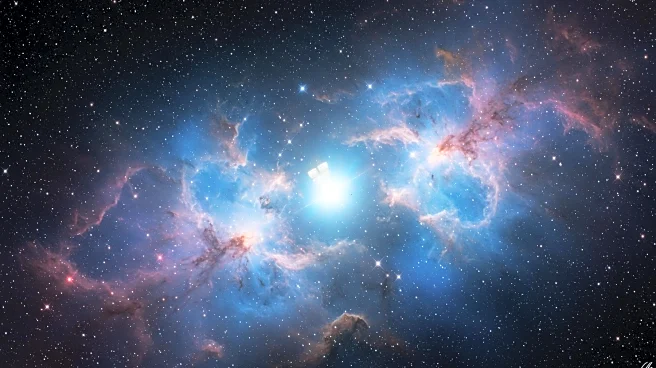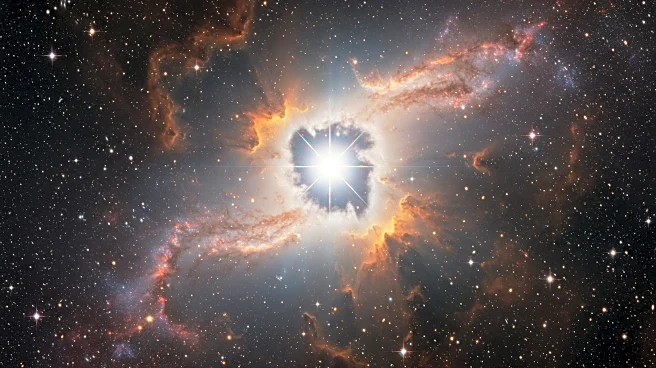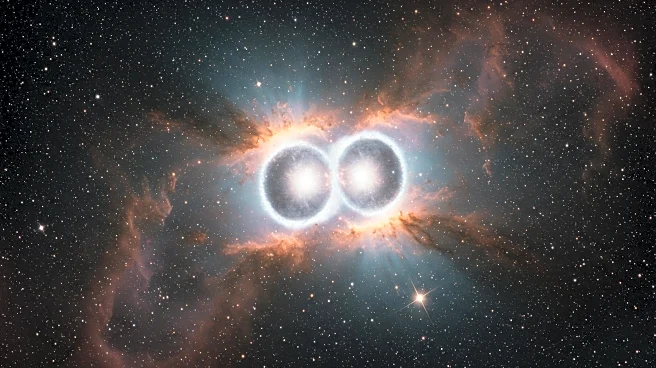What's Happening?
A rare supernova, designated 2021yfj, has revealed the distinct layers of a star for the first time, challenging existing models of stellar life cycles. Discovered by Steve Schulze at Northwestern University, the supernova exposed the star's inner layers, including silicon, sulfur, and argon, which are typically hidden. The Zwicky Transient Facility in San Diego first spotted the supernova, leading researchers to identify unusual spectral features. The presence of helium in the spectrum was unexpected, suggesting a rare stripping process due to stellar winds or interactions.
Why It's Important?
This discovery provides new insights into the structure and evolution of massive stars, offering a unique opportunity to test and enhance models of stellar evolution. Observations of stripped stars and supernovae are crucial for understanding the processes leading to their explosive deaths. The findings challenge current theories and highlight gaps in our knowledge of how massive stars evolve and end their lives, potentially influencing future research in astrophysics.
Beyond the Headlines
The ability to observe the inner layers of a star through a supernova offers a rare glimpse into the complex processes occurring within massive stars. This discovery may lead to advancements in the study of stellar evolution and the mechanisms driving supernovae. It underscores the importance of continued observation and analysis to refine our understanding of cosmic phenomena and the lifecycle of stars.
